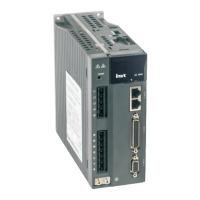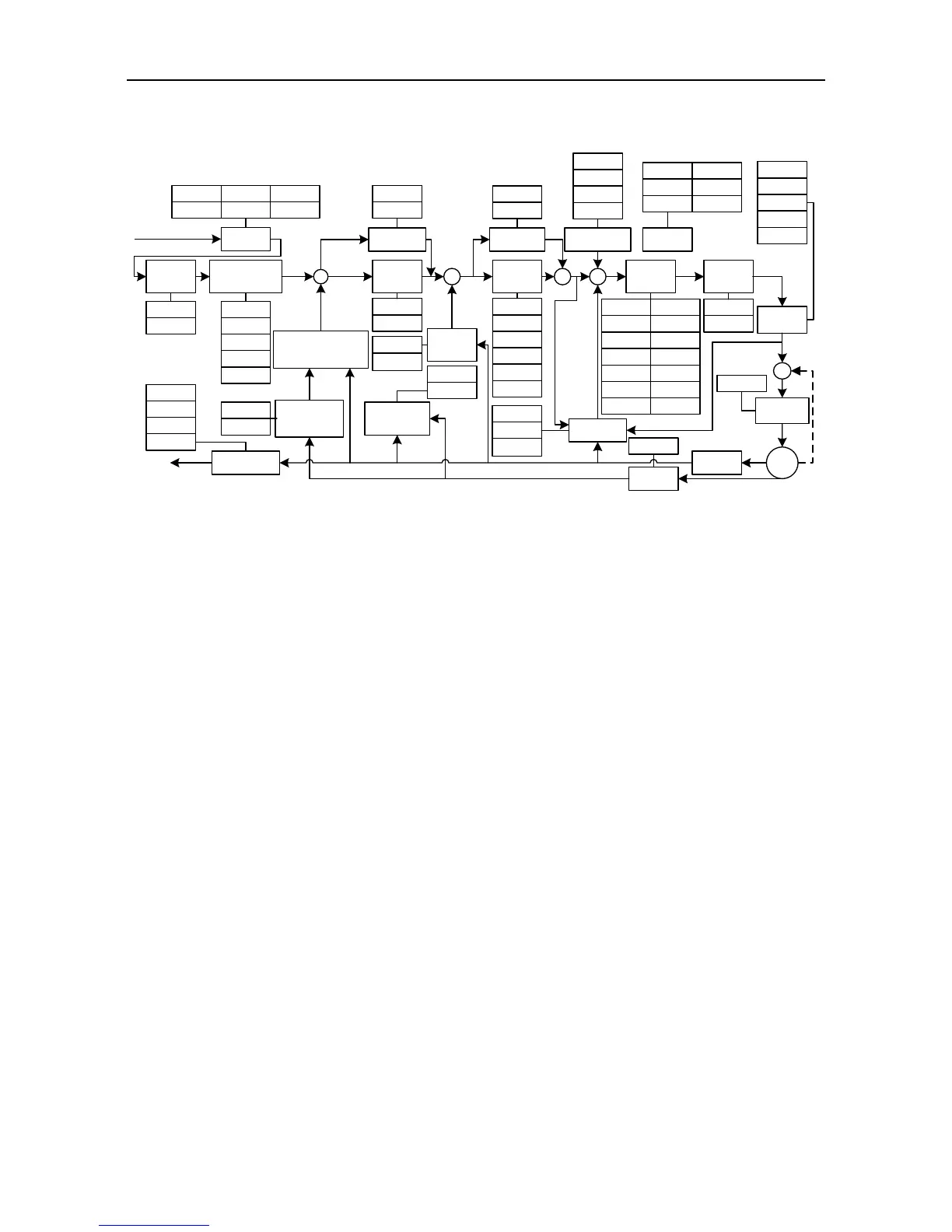The general procedures for parameter adjustment in the position mode are:
1) Initial setting of the parameters
The defaults of the parameters can be recovered by the default parameter recovering operation (see
chapter 5.2.5.3 for details).
2) Adjustment of the gain of the position loop
When the servo motor is running with default parameters, if the system oscillation occurs with buzz,
the position gain (P2.02, P2.07) should be adjusted smaller. If the system rigidity is relatively small,
the position gain should be adjusted larger.
3) Adjustment of the position smoothing filter
During position control, if the position pulse commands input frequency varies largely, it may be
caused by a larger impulse. At this time the position smoothing filters time constant(P0.33) or position
command FIR filter (P0.34) should be adjusted to moderate the impulse.
4) Adjustment of the electronic gear
If the pulse transmission frequency of the pulse generator is restricted, or the transmission frequency
does not meet the mechanical requirements, we can change the pulse input frequency by adjusting
the value of the electronic gear parameters (P0.25, P0.26, P0.27, P0.28 and P0.29) to meet the
requirements for position control.
5) Adjustment of position feed-forward
In the case the retention pulse is large or fault-free follow-up is required, we can improve the position
follow-up performance by adjusting the speed feed-forward gain parameter (P2.10) and speed
feed-forward gain filter parameter (P2.11). However, it should be noted that if the speed feed-forward

